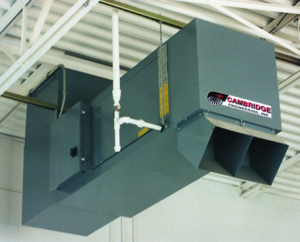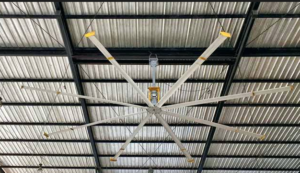Creating a successful environment for workers is equally important in the winter as it is in the summer. Maintaining proper air temperature and quality when the weather turns cold will ensure that workers are productive and healthy. However, winterizing your ventilation system requires more consideration than turning fans off and heaters on. From our team of ventilation experts, here are a few tips on how to best winterize your ventilation system.
Avoid Temperature Swings
 It is important to provide a comfortably warm temperature when workers are present to maintain productivity. What you shouldn’t do is turn the heaters off after workers leave. This may allow the temperature of equipment, building and floor surfaces to cool to temperatures below the dew point. If the activities inside the building generate humidity during operating hours, then there is the potential for condensation to form on the surfaces which may result in corrosion or safety hazards.
It is important to provide a comfortably warm temperature when workers are present to maintain productivity. What you shouldn’t do is turn the heaters off after workers leave. This may allow the temperature of equipment, building and floor surfaces to cool to temperatures below the dew point. If the activities inside the building generate humidity during operating hours, then there is the potential for condensation to form on the surfaces which may result in corrosion or safety hazards.
Maintain a Supply of Fresh Air
Turning off fans and closing openings in a building is the best way to keep warm air in and cold air out. What that also does is trap inside dust, fumes and smoke generated by operating activities. To avoid an unhealthy build-up of these air contaminates, it is best to leave at least one fan on to maintain a steady flow of fresh air inside the building. That will also reduce the humidity and the chance of condensation. With one or more fans running, remember to also open louvers or doors to prevent an unsafe pressure build-up.
 Keep HVLS Fans Running
Keep HVLS Fans Running
HVLS fans are great for comfort cooling because they move a lot of air. In the winter, they can be used to assist in comfort heating because they will pull hot air from the roof level and blow it down to floor level where workers are present. When running the HVLS fans you will want to reduce the fan speed to where it moves the air but, does not induce the evaporative cooling effect.
Conclusion
I hope that these tips have helped you understand the importance of winterizing your ventilation system. Creating a success environment year-round requires having the right ventilation equipment and knowing how to adjust the system according to the outside weather conditions.
